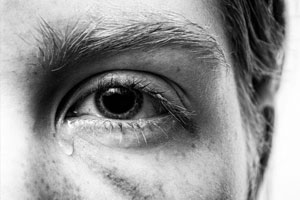When presented with a traumatic situation, responses that may seem abnormal are often really normal reactions to abnormal stimuli.
Description
Psychological trauma is present when a situation or a series of events challenges or threatens an individuals entire world view. When the present reality is incongruent with an individual’s previously held perceptions of that reality, trauma is likely as the individual attempts to cope with information that simply doesn’t fit within his/her concept of the world and his/her role in it.
Trauma can manifest itself in a variety of ways. Examples of trauma reactions include:
- Feeling nervous, helpless, fearful, sad
- Becoming easily upset or agitated
- Feeling shocked, numb, or not able to feel love or joy
- Feeling detached or unconcerned about others
- Having trouble concentrating or making decisions
- Feeling jumpy and getting startled easily
- Feeling on guard and/or constantly alert
- Experiencing unwanted memories or dreams about the event
- Physical reactions such as stomach pain, sweating, headaches, rapid heart rate
- Sleep difficulties
- Fatigue
- Self-blame, pessimism or nihilism
- Distrust of others – which can lead to conflict
- Withdrawal, feelings of rejection, or abandonment
- Substance use
Self-Assessment of Trauma Exposure:
By identifying your level of exposure to potentially traumatic events, consider the following events. Thinking back over the last seven days, have you:
| Potentially Traumatic Event | Yes/No: |
|---|---|
| Witnessed a higher than average number of deaths? | |
| Been unable to meet patient(s) needs? | |
| Had direct contact with grieving or angry family or community members? | |
| Been required to perform duties outside of regular duties or worked longer hours? | |
| Witnessed illness or death of co-workers? | |
| Worried about the health and safety of family members/significant others? | |
| Been unable to return home or been unable to communicate with family members/significant others? | |
| Felt betrayed by your leadership? | |
| Worried about your own health and safety or had insufficient PPE? |
Adapted fromSchreiber, M.D.(2012). “PsySTART Staff Triage System.” 3-17-2020
For a more in-depth self-assessment of Burnout and Compassion Fatigue, try the ProQOL (Professional Quality of Life Scale)
What you can do:
If you’re experiencing any of the above, try one or more of the following:
- Square breathing – inhale for a count of 4, hold for 4, exhale for 4, rest for 4. Repeat.
- Connect regularly with friends, family, and colleagues
- Limit over-exposure to media – and consume the media that you do with a thoughtful and critical eye
- Get adequate rest – at least 8 hours each day
- Focus on the right fuel – maintain sufficient intake of healthy food and stay hydrated
- Ask for help – reach out to a counselor, or your organization’s EAP or chaplain for support
- Immerse yourself in nature –take a walk outside, add plants to your indoor space if possible, or even sit by a window
- Embrace laughter – bring a sense of lightness by flexing your sense of humor
- Exercise – aim to get moving for at least 30 minutes each day
Resources that can help:
- Learn more strategies for healthcare workers to manage the stress associated with COVID-19 here.
- Try out the Headspace app (free for health professionals during COVID-19 emergency) for mindfulness exercises, guided meditations, and videos
- Develop a supportive buddy system
- See if your employer provides an Employee Assistance Program
- Reach a trained crisis counselor through SAMHSA’s Disaster Distress Hotline (1-800-985-5990 or text TalkWithUs to 66746)

